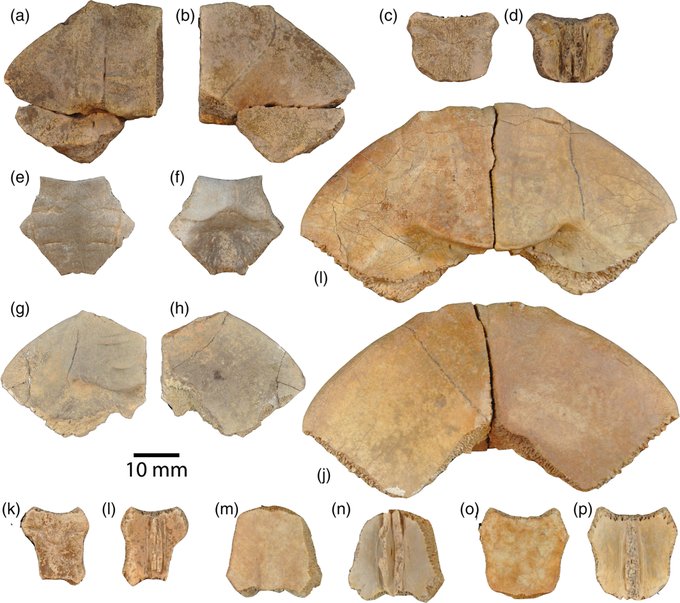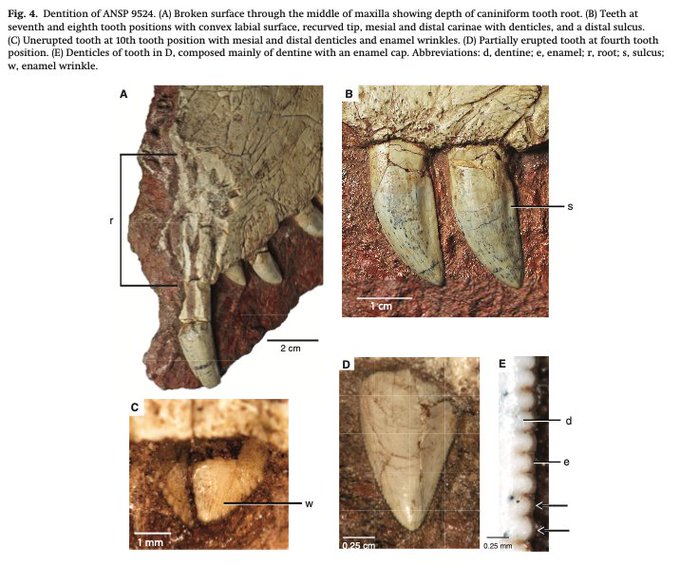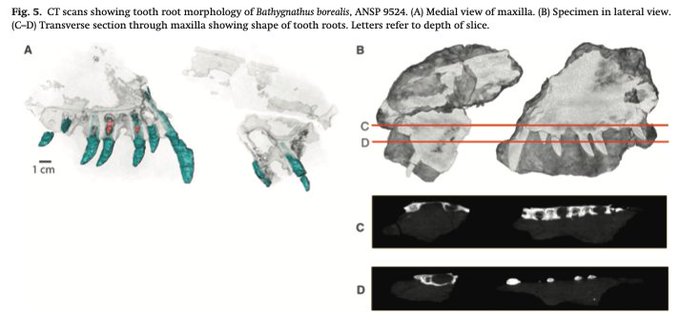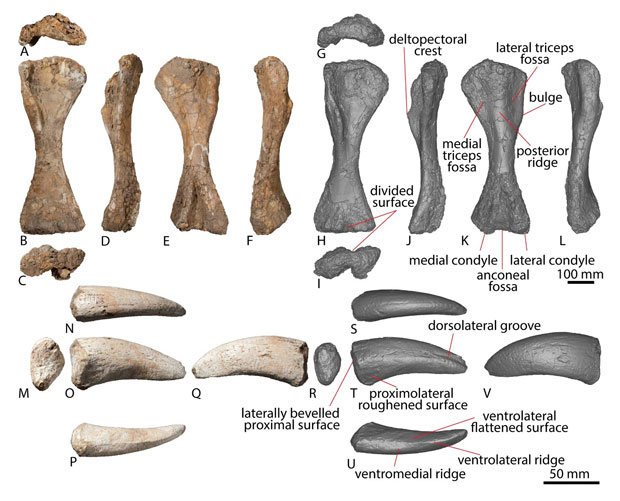FOSSILFRIDAYのTwitterイラスト検索結果。 1,209 件中 9ページ目
Just in time for this #FossilFriday, we are happy to announce that the Book of Abstracts of the III Jornadas de Paleontología de la Cuenca Neuquina has been published in PE-APA!
You can download the file in #OpenAccess here:
https://t.co/MzToX0rOLY
Happy #FossilFriday 🥳🥳
I wanna share my latest paper and its figure (by @rikei_hayanon)
https://t.co/HKP51oYIss
I would be happy if I could share with you an opportunity to think about what’s happening in museum exhibitions.
#fossil #dinosaur #museum
For #FossilFriday, Adrian et al. describe and evaluate new specimens of the Eocene geoemydid turtle Bridgeremys & apply geometric morphometric techniques to evaluate epiplastral variation among co-occurring geoemydids in the Uinta Basin.
https://t.co/JJxsSHrm0v
#FossilFriday Maip macrothorax, a large megaraptorid from Upper Cretaceous of Patagonia, Argentina. https://t.co/c7kIx3HsD6
Its #FossilFriday again today.
#Eryops & #Protoceratops
Flying high over a Carboniferous forest, this amazing dragonfly model is the latest addition to our @ROMtoronto's Willner Madge Gallery, #DawnOfLife - it was made by ROM resident artist extraordinaire Georgia Guenther, her last project before her retirement #FossilFriday 🌊
Discovered in the Argentine foothills by a goatherd, Victoriano Herrera, in 1959, Herrerasaurus (~350kg (772lbs)lived ~231 MYA. A bi-pedal carnivore & originally thought to be a proto-dinosaur. Prof. Bittencourt suggest Herr. sits in a saurischian branch of its own. #FossilFriday
Bandringa was an ancient shark-relative found in the Mazon Creek concretions. The dominance of youngsters and egg cases suggest the area served as a nursery. What's more, arthropod remains are found in their stomachs.
https://t.co/OSHj0OEoF4
#ChondrichthyesWeek #FossilFriday
#OTD in 1819 William Bullock began the 26-day auction of the entire contents of his London Museum, the Egyptian Hall on Piccadilly. Amongst the specimens to be sold was the #ichthyosaur skull found in 1811 by #MaryAnning’s brother Joseph. #FossilFriday
#FossilFriday Two new Homo erectus and co-ocurrence of two technologies? Skulls DAN5/P1 (A) & BSN12/P1 (B) & tools... check out the story on https://t.co/0Qf5opQAmx
#FossilFriday
Not a dinosaur? It must have been a great surprise to find the skull of an ancient animal with very big teeth in PEI back in 1845! Sphenacodontids are non-mammalian synapsids, large terrestrial vertebrates that lived before the dinosaurs during the Permian Period.
Enjoyed reading about the smallest sauropod known to science to be described from Australian fossils - at an estimated 4.2 Tonnes "Oliver" wasn't that small! Our blog has more: https://t.co/NYvugrDVEt #dinosaurfossils #FossilFriday #Diamantinasaurus
In 1905, this ~20myo partial skeleton of Syndyoceras = collected in W Neb. It's ~2.5 ft tall w/ horns orig covered by keratinous sheath like antelope today. EH Barbour named the species "Syndyoceras cooki" to honor its discoverer Harold Cook. Illust.: Mark Marcuson #FossilFriday
Lewisuchus admixtus is an early dinosauriform from the lower Upper Triassic of Argentina. Recent discovery of 2 partial articulated skeletons provide significant novel information:
https://t.co/B9LJAwV8j9
#paleontology #archosaur #fossils #FossilFriday #dinosauriform
#FossilFriday Eretmorhipis was an Early Triassic hupehsuchian. Not only did it have a stiff bony tube of a body formed from its ribs, but its still looks like a platypus’. It even had extremely small eyes and mechanoreceptors on its snout.
Art by Andrey Atuchin.
We face unprecedented rates of #climatechange and #extinction. The humble foram is one of the most abundant micro #fossils in the world, and survivor of multiple mass extinctions. They whisper stories of climate change and environments through #deeptime. #EarthDay #FossilFriday
hey, it's #FossilFriday today here's some #paleoart(s):
#Metriorhynchus and #Opthalmosaurus
#Conceptart for a baby #Tyrannosaurus rex; 1m tall and standing next to a t-posing cosplayer (and the silhouette of an adult #TyrannosaurusRex ). I'd like to make a life-sized #plushie of it at some point (hence the simple colour pattern).
#FossilFriday #Paleoart #dinosaurs
Many thanks again for the hospitality @museocsnbergamo ! Here is a little preview of our models. The thalattosaur Edennasaurus & the basal? diapsid Drepanosaurus both bizarre animals are from the Norian of Lombardy (Italy). More soon! #FossilFriday #paleontology @Artec3DScanners
























































